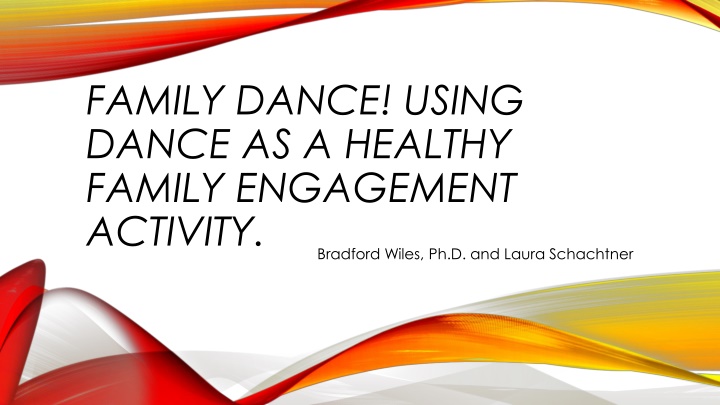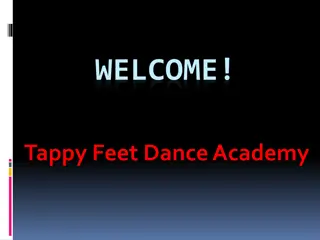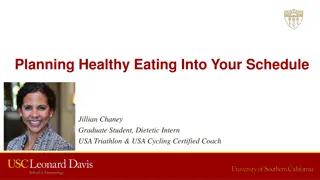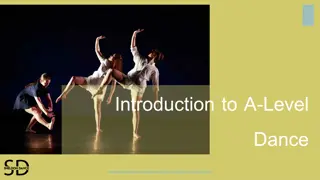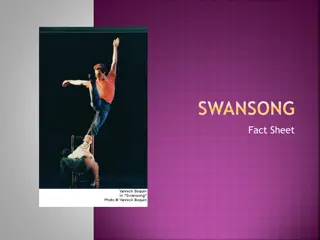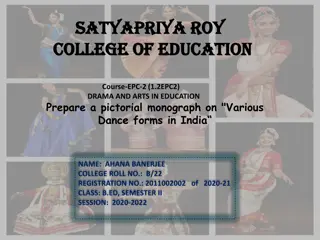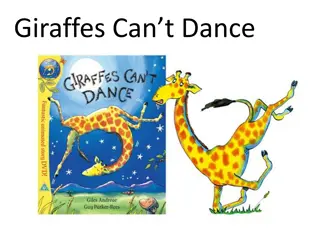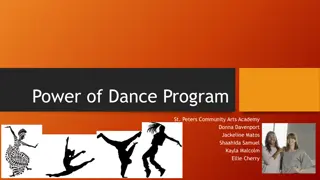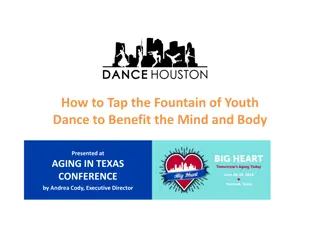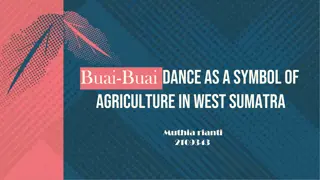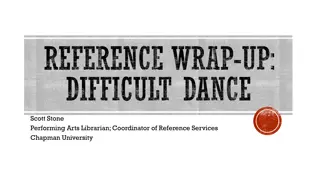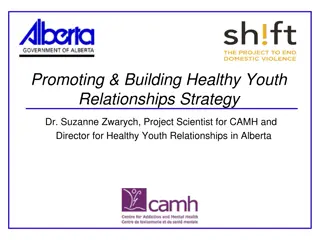Family Dance: Using Dance for Healthy Family Engagement
Encourage family health and parental involvement through a dance program for beginners. Learn about the benefits of family dance activities, including improved physical fitness, confidence, and academic performance. Discover research supporting the importance of strong families and parental engagement in children's learning. Take a holistic approach to wellness with fun and engaging family dance sessions.
Download Presentation

Please find below an Image/Link to download the presentation.
The content on the website is provided AS IS for your information and personal use only. It may not be sold, licensed, or shared on other websites without obtaining consent from the author.If you encounter any issues during the download, it is possible that the publisher has removed the file from their server.
You are allowed to download the files provided on this website for personal or commercial use, subject to the condition that they are used lawfully. All files are the property of their respective owners.
The content on the website is provided AS IS for your information and personal use only. It may not be sold, licensed, or shared on other websites without obtaining consent from the author.
E N D
Presentation Transcript
FAMILY DANCE! USING DANCE AS A HEALTHY FAMILY ENGAGEMENT ACTIVITY. Bradford Wiles, Ph.D. and Laura Schachtner
PROGRAM OVERVIEW What is it? Dance program for beginners Promotion of family health and parental involvement Scaffolding strategies Dancing! What do we hope to achieve? Family health Strong families
RESEARCH INFORMING OUR GOALS Enjoyable time together makes families strong (University of Nebraska-Lincoln Extension, 2007.) Children are more physically active with parents (Rebold, Lepp, Kobak, Mcdaniel, & Barkley, 2016)
WHY ARE OUR GOALS IMPORTANT? STRONG FAMILIES/PARENTAL INVOLVEMENT Parental involvement linked to higher reading and math scores Organized activities also enhance academic performance (Cooper, Crosnoe, Suizzo, & Pituch, 2010) Parental involvement also increases children s involvement in their own learning (Zimmerman, 1990, as cited in Xu, Benson, Mudrey-Camino, & Steiner, 2010)
BENEFITS OF DANCE/PHYSICAL ACTIVITY (PA) Physical Weight loss Increased fitness, energy, and strength Psychological Higher confidence Positive mood changes Behavioral Increased physical activity at home in participants and participants siblings Improved eating habits (Beaulac, Kristjansson, & Calhoun, 2011)
BENEFITS OF DANCE/PHYSICAL ACTIVITY CONT D. More relationships Improved social skills Interpersonal Academic Better grades Improved homework completion (Beaulac, Kristjansson, & Calhoun, 2011)
WHY? Why is it needed? A crucial determinant influencing PA is the environment in which a child lives (Wilke, Opdenakker, Kremers, & Gubbels, 2013, p. 226) The reach of physical activity interventions is very limited.
TEACHING COMPONENTS- SCAFFOLDING 6 strategies of scaffolding Questioning Explaining/Instructing Modeling Feedback Maintaining focus Structuring
SCAFFOLDING-QUESTIONING Assessment Yes/no/one-word answers For example Do you like dancing? Assistance Open-ended For example What do you think about dancing? Practice
SCAFFOLDING-EXPLAINING AND INSTRUCTING Parents can help their children learn by explaining what is happening For example, Dancing is when we move our bodies in a different way. It usually happens when there is music playing but you can dance without music too. Practice
SCAFFOLDING-MODELING Modeling occurs on 2 levels Parents are always modeling for their children Parents can also intentionally model specific things, such as characters out of a book or dance moves Practice
SCAFFOLDING-FEEDBACK Important to tell children what the feedback is about Use because or explain what the feedback is for For example You re doing a good job today because you re getting up and dancing! Practice
SCAFFOLDING-MAINTAINING FOCUS Adult should model their own interest Can go along with distraction and then redirect Offer options Practice
SCAFFOLDING-STRUCTURING Set the stage for what will happen Practice
GENERAL TAP SESSION FORMAT Greet parents and children Welcome and introduce yourself for those who do not know you Explain how the session will go that evening (scaffolding strategy of structuring ) Short explanation of one of the scaffolding strategies Teach moves Dance
DANCE STEP PLAYLISTS Tap Steps for All Sessions Tap Steps - Basics
LINK FOR ALL FAMILY DANCE! RESOURCES Family Dance!
DANCE MOVES Stamp-https://www.youtube.com/watch?v=yCMkj-LiIPQ (0:35-0:50) Step and clap-https://www.youtube.com/watch?v=a-15PIJNpyE (0:00-0:09) Shuffle-https://www.youtube.com/watch?v=7D582WY2Et4 (0:00-0:52) Irish-https://www.youtube.com/watch?v=43UoZ0a4cIA (0:00-1:13) Toe drops and heel drops-https://www.youtube.com/watch?v=_p3H7csi_A8 (0:00-1:20) Flap-https://www.youtube.com/watch?v=WcxRnK4-r1s (0:00-0:39)
DANCE MOVES CONTD. Straight kick-https://www.youtube.com/watch?v=1-wzOXT_orc (0:55-1:03) Shuffle ball change-https://www.youtube.com/watch?v=7wmmBLi1EyI (0:00- 1:41) Buffalo-https://www.youtube.com/watch?v=unszgGPxC0Y Thunderstorm (run in place) Toe tap- https://www.youtube.com/watch?v=X61YfjtjjD4&index=4&list=PLSc9hQHuK- PKr2NJfLNMEIG0Bx3DxHsC6 (0:00-0:48)
REFERENCES Beaulac, J., Kristjansson, E., & Calhoun, M. (2011). 'Bigger than hip-hop?' impact of a community-based physical activity program on youth living in a disadvantaged neighborhood in Canada. Journal of Youth Studies, 14(8), 961-974. Retrieved from www.scopus.com Cooper, C. E., Crosnoe, R., Suizzo, M., & Pituch, K. A. (2010). Poverty, race, and school. Journal of Family Issues, 31(7), 859-883. Retrieved from www.scopus.com parental involvement during the transition to elementary Pate, R. R., O'Neill, J. R., Brown, W. H., McIver, K. L., Howie, E. K., & Dowda, M. (2013). Top 10 research questions related to physical activity in preschool children. Research Quarterly for Exercise and Sport, 84(4), 448-455. Retrieved from http://search.proquest.com.er.lib.k- state.edu/docview/1651852128?accountid=11789 Rebold, M., Lepp, A., Kobak, M., Mcdaniel, J., & Barkley, J. (2016). The Effect of Parental Involvement on Children's Physical Activity. The Journal of Pediatrics, 170, 206-210. University of Nebraska-Lincoln Extension. (n.d.). Family relationships: Strong family relationships. Retrieved from http://child.unl.edu/strongfamilies Wilke, S., Opdenakker, C., Kremers, S. P., & Gubbels, J. S. (2013). Factors influencing childcare workers' promotion of physical activity in children aged 0-4 years: A qualitative study. Early Years: An International Journal of Research and Development, 33(3), 226-238. Retrieved from http://search.proquest.com.er.lib.k-state.edu/docview/1651832479?accountid=11789 Xu, M., Benson, S. N. K., Mudrey-Camino, R., & Steiner, R. P. (2010). The relationship between parental involvement, self-regulated learning, and reading achievement of fifth graders: A path analysis using the ECLS-K database. Social Psychology of Education, 13(2), 237-269. Retrieved from www.scopus.com
